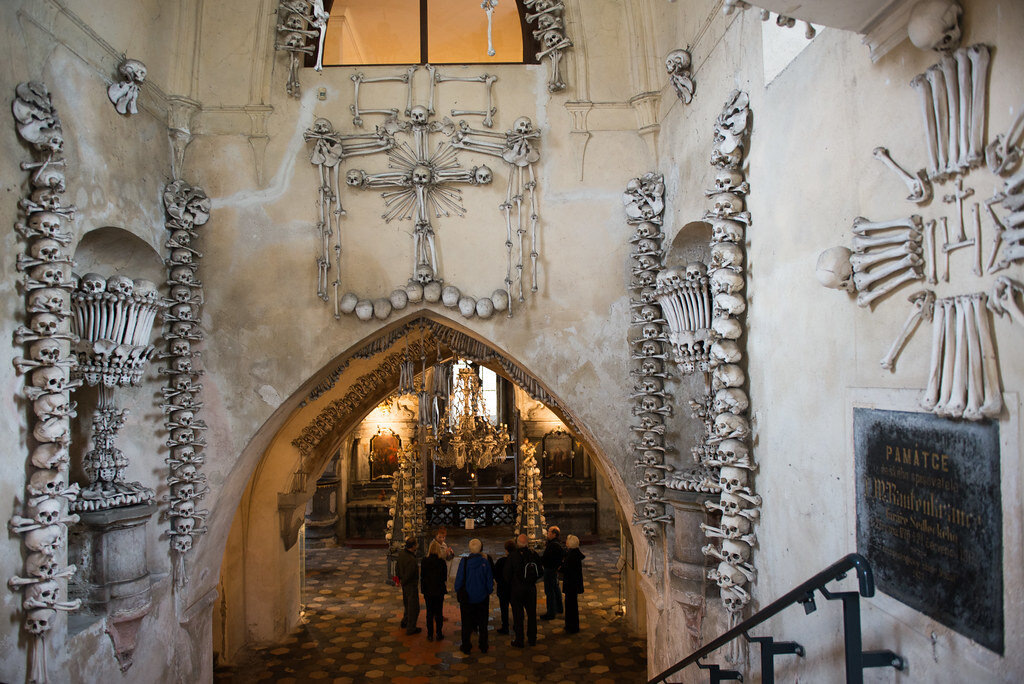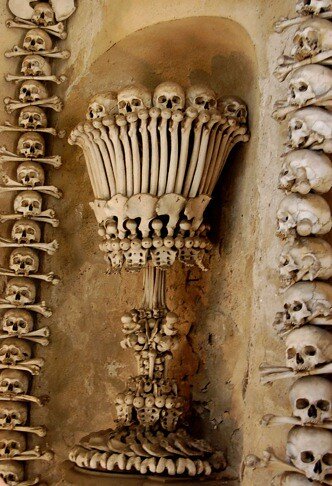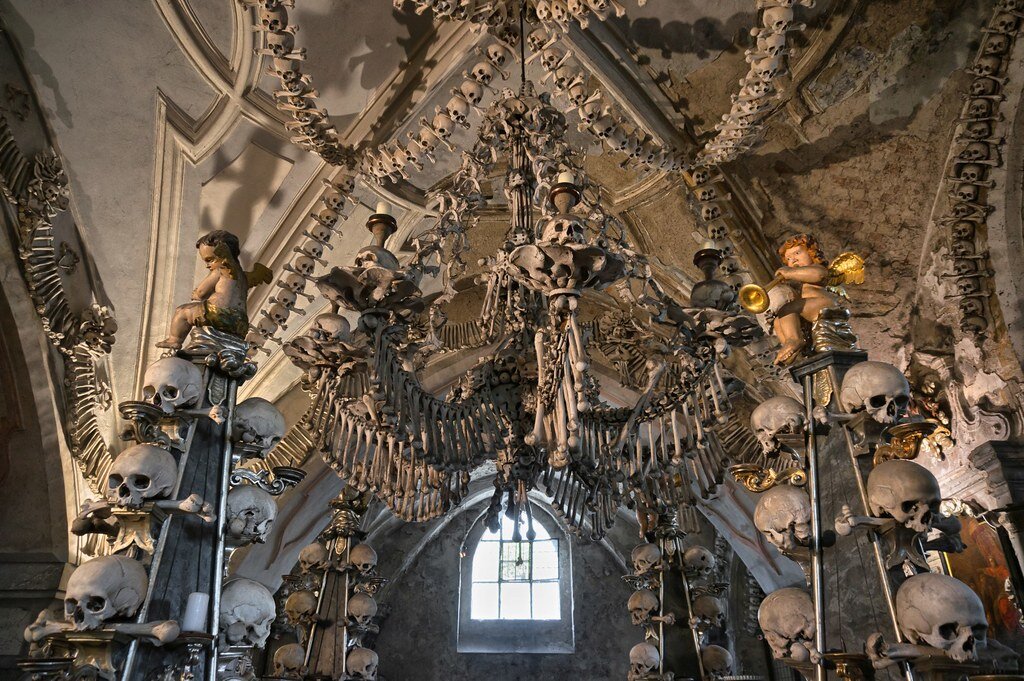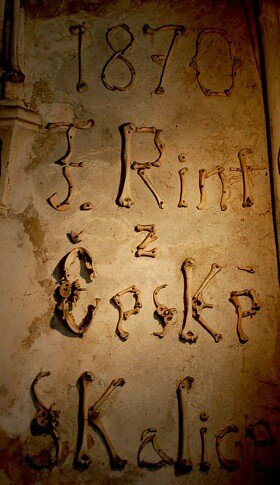Like something out of an Edgar Allen Poe macabre tale, an Ossuary is often misconstrued as a morbid and perhaps even a malevolent arrangement of skeletal remains. However, that is far from the truth. Underneath the small Roman Catholic Chapel at the Cemetery Church of All Saints rests a chamber decorated with human skeletons. It used to be a part of the former Abbey in Sedlec, a suburb of Kutná Hora in central Czech Republic just an hour outside of Prague.
The famous Church of Bones is one of forty sites worldwide that have used preserved bones to construct a necropolis. The story of Sedlec Ossuary dates back to 1278 AD. King Otakar II of Bohemia charged an abbot of the Cistercian Monastery in Sedlec to venture to the Holy Land. Henry, the abbot, traveled to the Church of the Holy Sepulchre in Jerusalem, the location where Jesus Christ was crucified (sometimes referred to as Golgotha).
The abbot scooped some of the Holy Land's soil into a jar and returned to bless the Cemetery. As a result, Sedlec became an even more desirable place to be buried. People wanted their loved ones buried and blessed under the holy soil brought back from Golgotha.
In 1400, some reconstruction of the Sedlec Chapel took place. A Gothic-style church was built in the Cemetery center. It consisted of a vaulted upper level and a lower chapel to function as an Ossuary for the mass graves unearthed during the renovations. Events such as the Black Plague and the Hussite Wars added to the number of people buried at the site. Mass graves were commonplace because the Cemetery was running out of room, which only further added to the need for renovation.
In 1870, the overwhelming number of human remains garnered exciting results when the Schwarzenberg family employed a local woodcarver. František Rint was hired as a contractor to figure out what to do about the heaps of bones. Initially, the job was to organize the bones. Perhaps the intention was to mimic the Paris Catacombs, where the bones could be arranged to save space in the Ossuary. However, Rint had a different idea.
In the images, we can see a massive chandelier hanging from the ceiling of the Ossuary. It's the most significant piece in the small chapel and is said to be constructed of one of every kind of human bone. The stunning bone decorations contain between 40,000 and 70,000 skeletons. Today it is one of the most visited tourist attractions in the Czech Republic.
While morbid and macabre, the Ossuary is far from the only bone chapel or church. From Peru, Spain, Italy, France, Czechia, and even Cambodia, there are about 40 churches, crypts, and catacombs constructed and decorated entirely of emaciated and preserved human skeletons.
Written by James Lemons








